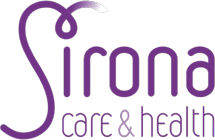Healthcare manufacture brought into our living rooms
A research network called ‘Redistributed Manufacturing in Healthcare Network’ (RiHN) led by the University of the West of England (UWE Bristol) has won Engineering and Physical Services Research Council (EPSRC) funding to investigate how technology advan
- 16th September 2016
Imagine a future where patients are enabled to print tablets designed to their genetic makeup or where bespoke prosthetics could be printed locally on demand.
A research network called ‘Redistributed Manufacturing in Healthcare Network’ (RiHN) led by the University of the West of England (UWE Bristol) has won Engineering and Physical Services Research Council (EPSRC) funding to investigate how technology advances could mean manufacturing of healthcare products are brought closer to users; in some cases as close as their own front room.
RiHN partners include researchers that span the disciplines of manufacturing, healthcare technologies, management and human factors from the Universities of Loughborough, Cambridge, Brunel, Nottingham, Newcastle and UWE Bristol.
Network Director, Dr Wendy Phillips from UWE Bristol, said:
“The time has come for a big rethink on business modelling in relation to research, design, manufacture and distribution of healthcare products and therapies. The RiHN aims to deliver a collective vision of the research needed to position the UK at the forefront of healthcare manufacturing via redistributed manufacturing (RDM) ideas.
“RDM is defined as technology, systems and strategies that change the economics and organisation of manufacturing, particularly in relation to location and scale. Smaller-scale precision manufacturing can radically reduce supply chain costs, improve sustainability and tailor products to the needs of patients and consumers.
“The advances in healthcare technology mean that traditional manufacturing that relies on economies of scale by making standardised products in vast quantities, overseas using cheap labour and relying on complex global supply chains could radically change.
“There are negatives associated with this traditional model including sustainability issues related to transport and employment and risks associated with current global instability that affect the resilience of supply networks.
“Our team is looking at developing new business models that harness the UK’s thriving research and development work and technological breakthroughs that now make it possible to revolutionise manufacturing options. There are also tangible benefits with bringing products close to end users in terms of bespoke healthcare.”
The advent of innovations such as 3D printing and advanced cell therapeutics means that we are at a stage where we can reverse business models in manufacturing returning to a time when products were made locally in response to demand and using advances in technology to enable bespoke options.
The RiHN is aiming to help position the UK at the forefront of Healthcare Manufacturing by leading on wide-ranging issues from regulations to supporting the ways of making this new business model happen.
Case study
A great example of investigating the feasibility of RDM for home-use medical devices comes from a collaboration between Newcastle upon Tyne Hospitals and Newcastle University.
The team has developed a single use urine flow meter and voiding diary (the PeePod, now licensed to MMS/Laborie as the Flowtaker) that through the use of 3D printing could be manufactured locally, potentially even in the home by producer-consumers (‘prosumers’). Current production is on a large-scale and across several different countries resulting in significant shipping costs which are exacerbated by small volume deliveries to many different community healthcare providers.
By redistributing manufacturing towards localised production, medical devices like the PeePod have the potential to decrease the final cost, reduce the time for the device to be available to the patient, improve the patient experience, and offer a possibility of customisation. The project will evaluate the potential for production of medical devices in the home and locally (e.g. healthcare centres and pharmacies).






